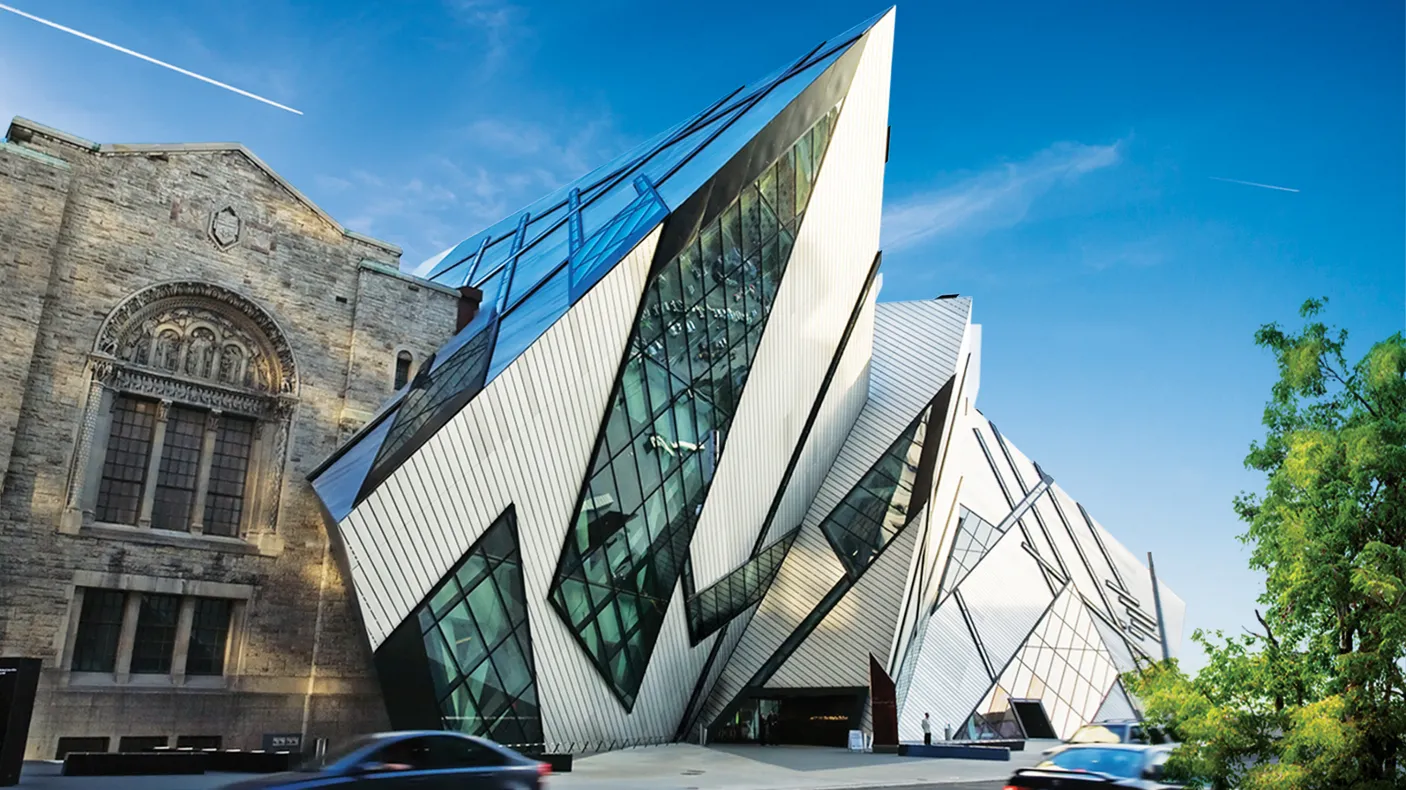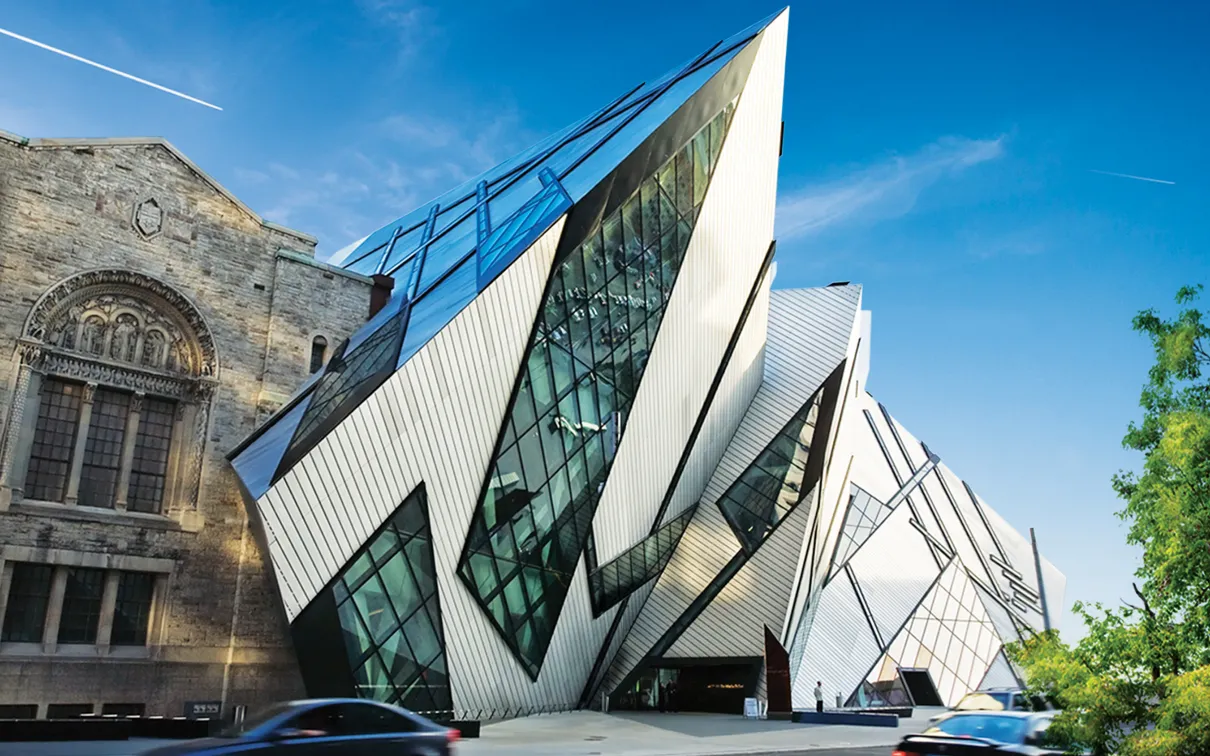Schad Gallery of Biodiversity
Published
Category
Press Release
ROM’s new permanent gallery vividly presents the diversity and fragility of life on Earth, opening May 16, 2009
Opening at the Royal Ontario Museum (ROM) on May 16, 2009, the Schad Gallery of Biodiversity is devoted to exploring our world’s biodiversity and the numerous factors affecting its conservation and survival. This innovative and interactive gallery combines seven ecosystem experiences, thousands of specimens and the Earth Rangers Studio featuring live wildlife shows to convey a poignant message about the stunning variety of life on Earth and the fragility of nature’s amazing web.
“This spectacular new gallery brings together the breadth of the ROM’s natural history collections and the latest research by Museum curators to convey a powerful statement about life on Earth and life in crisis that is both compelling and hopeful,” says William Thorsell, ROM Director and CEO. “The additions of dynamic and thought-provoking programming, as well as live specimens, make this gallery a must-see destination for visitors of all ages.”
Located on Level 2 of the ROM’s Heritage Building, the Schad Gallery is at the centre of the Museum’s galleries devoted to natural history. A diverse ROM curatorial team, made of experts specializing in areas spanning from sharks and insects to lichens, water lilies and herons, has been involved in the development of this 10,000 square-foot specimen-rich permanent gallery.
“The Schad Gallery of Biodiversity represents the much-anticipated return of the Life Sciences collections to the ROM’s public spaces,” says Doug Currie, Curator of Entomology in the ROM’s Natural History department and the Schad Gallery’s lead curator. “The ROM’s curatorial team has been working diligently for two years to select the most spectacular specimens, the most compelling videos and the most fascinating information about our natural world. Visitors will walk away with a feeling of respect for our planet and a renewed sense of purpose to protect its biodiversity.”
The Schad Gallery of Biodiversity is named for Robert Schad and his family. Robert Schad is the founder and chairman of Earth Rangers, a non-profit organization that empowers kids to help improve the health of the planet. Robert’s wife Elizabeth Schad is a member of the ROM Board of Governors. Their generous gift supports the creation of this gallery, its programming, as well as related scientific research by the ROM’s curators in the Department of Natural History.
Mr. Schad states, “We are pleased to partner with the ROM. Capitalizing on the Museum’s extensive biodiversity collections, this gallery will effectively inform the visitor that the Earth’s biodiversity is in crisis. As well, Earth Rangers’ message of hope and action is a great complement to the gallery and will help families make positive changes in their daily lives to care for the environment. We are proud of the role played by Earth Rangers and the Schad Foundation to help the ROM bring the Schad Gallery of Biodiversity to reality.”
Three core themes run throughout the gallery and are the driving forces behind each ecosystem and species on display. Life is Diverse illustrates the astonishing number and variety of species on Earth – so many that the true extent of biodiversity is not yet known. Life is Interconnected demonstrates how species and habitats are so tightly interwoven that any impact on one of them necessarily affects the whole ecosystem. Life is at Risk highlights that the “web of life” is threatening to unravel due to human activities. This theme clearly points to humans being very much part of the problem and equally have the ability to be part of the solution.
THREE EXPERIENCE ZONES
Biodiversity Spine
The Biodiversity Spine forms the gallery’s central backbone and introduces visitors to the science of biodiversity. A line of glass cases presents a diverse array of specimens from the ROM’s collections, including endangered and extinct species, showcasing the staggering range of biodiversity and the urgent need to protect species at risk. At the east end of the gallery, visitors encounter a southern White Rhinoceros. This specimen, named Bull, was born in South Africa in 1963. From 1974 until his death in 2008, he was part of the Toronto Zoo’s successful captive breeding program where he sired three offspring. The White Rhinoceros was almost hunted to extinction in the 19th century, and by 1895 only 50 or so animals were known to remain on Earth. Thanks to conservation efforts their numbers have increased to more than 14,000 today. This demonstrates one of the greatest conservation success stories of our time. In Biodiversity Explored, visitors learn that, while approximately two million species have been discovered and identified, scientists have barely scratched the surface of the diversity of life on Earth. Current estimates of the total number of the world’s species range from five to 50 million. This area also includes a section entitled ROM Discovers that highlights the past, current and on-going research of the ROM’s curators committed to identifying, studying and ultimately saving species from extinction.
Biodiversity at Risk explores the factors contributing to species extinction, such as climate change and habitat destruction, human influence is causing more and more species to disappear forever. In less than 100 years, experts believe that half the world’s species may be gone. This area of the gallery is one of the only places on Earth to view a Dodo skeleton, a species irrevocably lost to history. The metre-tall flightless bird, related to pigeons and doves, was once endemic to the Indian Ocean island of Mauritius, off the coast of Africa. The Dodo’s extinction took place in the mid 17th century and is attributed directly to human activity. In Biodiversity Distributed, visitors learn about how species are dispersed around the world due to climate, geography, the presence or absence of other species and human intervention.
Ecosystem Experiences
This zone, wrapping around the periphery of the Gallery, creates the experience of witnessing firsthand seven of Earth’s ecosystems: The Coral Reef, Arctic, Western Atlantic, Grasslands, Great Lakes, Boreal Forest and Tropical Forest. In the Coral Reef a giant squid floats above visitors’ heads while in the Arctic, a Narwhal whale awes passers-by below with its characteristic long straight tusk. Flocks of migrating birds soar overhead from the Boreal Forest towards the Tropical Forest, where they spend our winter. A variety of sharks including Hammerhead and Blue sharks are suspended near their habitat in the Western Atlantic. Two particularly effective showcases in this zone use live displays to illustrate the complex interactions and mutually beneficial relationships between species inhabiting ecosystems. In the Coral Reef, a colourful aquarium houses a rich diversity of live reef invertebrates as well as small fishes that inhabit coral reefs. In the Tropical Forest, a colony of live Leafcutter Ants demonstrates symbiotic relationships between species and their environments.
Earth Rangers Studio
The Earth Rangers Studio is a dedicated multimedia space that presents Earth Rangers’ immersive and inspiring Power of One show, and thought-provoking ROM programs related to the latest scientific research, news and issues concerning life on Earth. Named for the charitable organization whose mandate is to inspire children to have a lasting passion for building a better future, the innovative studio brings the gallery to life and engages the audience in the connection between the impact human beings have on the environment and the importance of making responsible choices that protect nature.
Wired for live and interactive broadcast capability across Ontario, this 59-seat studio provides an entertaining and educational experience for both classroom and general visitors. Earth Rangers’ Power of One show is a 15-minute, multimedia presentation that features some of Earth Rangers’ most dynamic live animal ambassadors, including a lemur, snowy owl, serval cat and American kestrel. Visitors are in for exciting, up-close experiences as they learn about the challenges facing animals and how each of us has the power to help save the planet. ROM facilitators also offer educational and interactive presentations using touchable specimens, hands-on activities, experiments and demonstrations.
INTERACTIVE TOUCH SCREENS
Throughout the gallery, 12 high-tech interactive multimedia touch screens provide over 150 videos that speak to the gallery’s main themes, expand upon the specimens and give fascinating information about the natural world. Current research by ROM curators is also highlighted. Other video clips portray stunning and evocative footage of the natural world in action. One video shows the world from a tarantula’s point of view as it creeps along the forest floor. In another, dozens of freshwater hatchetfish dramatically leap out of the water to escape predators. Footage about species that are now extinct or at risk is particularly poignant.
OTHER INFORMATION
The ROM offers a variety of programming and lectures inspired by the Schad Gallery. On Saturday, April 18, wildlife artist and naturalist Robert Bateman leads a lecture entitled Nature Art and the Environment. Taking place at 2 pm in the Eaton Theatre, the talk explores our society’s troubled relationship with nature. Deeply concerned about global survival, Mr. Bateman offers a hopeful and inspirational approach that could succeed if certain currently held beliefs are reconsidered. Book signing to follow. Course admission is $25 (online $23) or $22 (online $20) for ROM members.
During six successive Tuesdays starting on April 28, Darwin, Evolution and Life explores how our ideas about life on Earth have progressed far beyond those proposed by Charles Darwin 150 years ago. Investigate the diversity of living things and the interrelationships between them, discover the evolutionary pathways taken by life and how DNA has opened up a new world of understanding. The course is run by Ian McGregor, the head science teacher in the ROM’s Education Department. Course admission is $225 (online $220) or $200 (online $195) for ROM members. To register for these programs or for more Schad Gallery-related programming visit www.rom.on.ca/programs or call 416-586-5797 for updated information.
The ROM Museum Store is celebrating the opening of the Schad Gallery of Biodiversity by offering a range of Canadian and globally sourced Earth-friendly products including giftware, jewellery, apparel, books and toys. This Sustainable Earth featured merchandise will be highlighted throughout the store. The ROM’s restaurants, c5 Restaurant Lounge and Food Studio, also mark the gallery’s opening with a variety of locally-sourced menu specials and Toronto community initiatives that will continue throughout the year. Returning is the extremely popular Green Gastronomy program that pairs a celebrity Ontario chef, a selected regional farmer and vintner to create a superlative dinner and wine menu that reflects a sensitivity to local suppliers and to the land. For more information about c5 Restaurant visit www.c5restaurant.ca or www.rom.on.ca/dining_shopping/dining/crystal5.php.
ROM Members already know that the best way to experience the ROM is through Membership. A ROM Individual or Family Membership delivers numerous benefits, including free general admission, newsletters, events, previews, discounts and much more. An exclusive Schad Gallery of Biodiversity Members' Sneak Peek takes place on Friday, May 15. For additional information or to purchase a membership, call 416.586.5700 or visit www.rom.on.ca/members.
Docents from the ROM’s Department of Museum Volunteers will offer free tours of the Schad Gallery of Biodiversity at regularly scheduled times. Visit www.rom.on.ca/visit/calendar/index.php for more information.
Admission to the Schad Gallery of Biodiversity is included with paid general admission. Adults: $22; Students and Seniors with ID: $19; Children (4 to 14 years) $15; Children 3 & under are free. Half price admission prices, presented by Sun Life Financial, apply on Friday nights from 4:30 pm to 9:30 pm. Groups of 10 or more adults may call Mirvish Productions Group Sales at 416.593.4142 or 1.800.724.6420 for information on special rates and private guided tours. Schools and student groups should visit www.rom.on.ca/schools/ or call the ROM's Education Department at 416.586.5801 for information on the Schad Gallery School Visits which are offered at both the elementary and secondary level.
Reich + Petch Design International is responsible for the innovative design of the Schad Gallery of Biodiversity.


